 |
Last updated: 8 November 2010 |
|
|
| This page documents astrophotography comments, tips, and photos. Contributions welcome. Be certain to see the other articles on the main Astrophotography page. |
Subject: ETX Camera Drive Sent: Friday, November 5, 2010 07:26:39 From: delarcombe@netidea.com (delarcombe@netidea.com) I don't know if you have seen this application of the ETX mount to photography. It is from John Macdonald in the Victoria Chapter of RASC. http://www.members.shaw.ca/wjm890131/JAlbum-web/ETX%20Camera%20Mount.htm Thanks for the help. Dennis Larcombe Kaslo BC presently east of Edmonton, Alberta
Subject: etx 125 Sent: Sunday, August 29, 2010 10:40:21 From: Charles Eye (nitesky3@sbcglobal.net) Hi Mike, Chuck here, I tried that hat trick with the d70 attached to scope but if its not one thing its something else? I have several trees around here and about a 15 minute window from around midnight to work with Jupiter between the trees before it gets to high for the camera not to touch the base. I gave up on the hat trick set exposure for different times and this is the best I could do. I"ll just keep trying this trial and error procedure.... it is fun attempting this... oh by the way, after your suggestion of resetting, calibrating and training the scope is working great..... Chuck
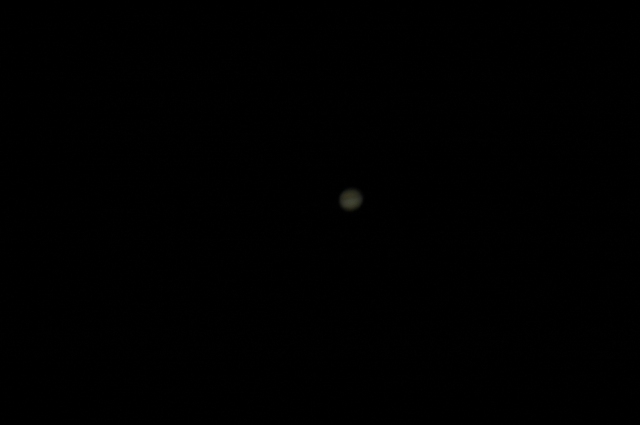
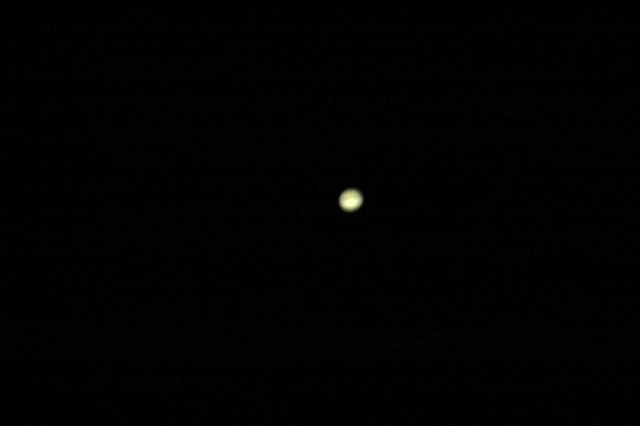
Subject: etx 125 Sent: Thursday, August 26, 2010 13:28:43 From: Charles Eye (nitesky3@sbcglobal.net) As far as taking pictures of Jupiter, been very difficult focusing mainly due to the way the view finder of the nikon d70 camera is made. The moon though is quite different, it focuses quite easily with no problems what so ever and that is probably due to being much brighter?? I'm going to try again tonight for Jupiter pics, only thing I know to do is just take somewhat out of focus, trip the shutter with camera remote, turn focus knob on scope and snap another, turn focus know a little more and keep doing this for about 15 or 20 frames, one of them has to be focused huh? Thanks again and you have a good clear night....... ChuckMike here: Yes, focusing is challenging (no matter what the camera). Right now, you can use the moon as the focus target and then slew to Jupiter. The focus will be the same (unless the ETX mirror shifts), so don't change it. Also, you should use the "Hat Trick" Technique (discussed on the Helpful Information: Astrophotography page) to avoid image blur due to the camera mirror movement. Also, you might want to see the Hartmann Mask articles on that page was well. And there is also the "Bahtinov Mask" and the Stiletto Focuser, both reviewed on the Accessory Reviews: Astrophotography page.
And:
Thanks for the reply and info. I forgot to mention that am trying something a little different, I am going to put a 2x converter between the camera and the scope [no telescope lens, just camera] to make what should be a 3800mm lens, I use the converter mainly for my 500mm camera lens...... ChuckMike here: That should work. But the increase in magnification will result in more blurring from movement. By the way, on my LX200-ACF I have combined a 2X Barlow Lens with a 3X TeleXtender, for a combined 6X increase in magnification at prime focus. Works great on the moon with my D70 DSLR.
And:
Yes, I have been wondering about the extra magnification. I wanted to ask if you accept pics through this kind of mail if so I thought I'd send any results to share with you..... ChuckMike here: See the "Electronic Mail Etiquette and Submittal Guidelines" on the ETX Site home page.
And and more:
Hello, I tried that hat trick with Jupiter, I can't seem to move fast enough before picture is just too bright. Will be some trial and error with this one, I'm sure I need to learn more about my camera and using it. I did get and attaching a fairly decent pic of the moon though with that 3,800mm set up using the 2x converter.. have a good day. Chuck
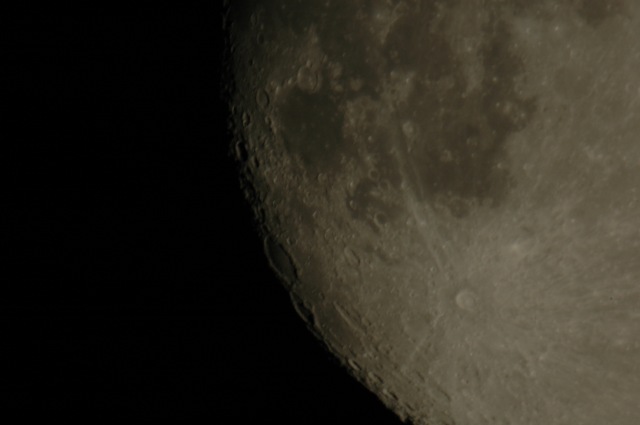
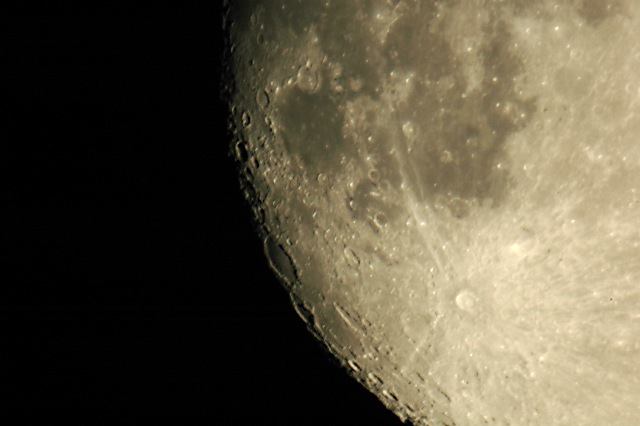
Subject: Novice Trying Astrophotography Sent: Monday, August 23, 2010 07:55:03 From: Ted Trostle (tctrostle@gmail.com) I have found an old adapter that attaches my Canon A560 digital camera to my ETX-125. From what I have read this camera may not provide the quality shots other cameras do. But it is what I have and I have been advised I can program it using the CHDK software....more on that later. What I would like to ask could some one share a series of shots that need staked, processed, etc.. so I could practice the stacking and processing using Photoshop ?Mike here: Using Photoshop to stack is a bit of a pain. Use AstroStack, Registax, Keith's Image Stacker, or Lynkeos. For more information on stacking and processing, see the Helpful Information: Astrophotography page.
Subject: autostar drive problem for astrophotography Sent: Friday, April 9, 2010 05:04:47 From: Posma Net (posmanet@web.de) As you can see on the pictures i am using an ETX OTA on an Meade DS Mount with Autostar. (Just like the DSX ones.) I have connected my Canon DSLR with Meade T2-adaptor. This ist fairly good balanced for the mount as no movement occurs when loosening the upper clamp. On the M50-picture you can see the problem i am expieriencing with my autostar. This picture ist taken with 240 seconds exposure. I am using remote control and mirror lock-up with the camera so that vibrations cannot be the reason. Vibrations would look more like blur on such long time exposures anyway. Every long time exposure with the autostar looks like this, with this kind of "slow tremor" over both axes. The object always stays in my FOV for over hours, (i.e. telescope is aligned good) but seems to jitter slowly in place. When i replaye the DS with the old ETX-RA forks on a wedge (all other conditions the same) this problem does not occur. Is it possible that the drives' resolution is not sufficient for long time exposures? Du you have any ideas what else could be the reason for my problem? Thanks! Posma Net
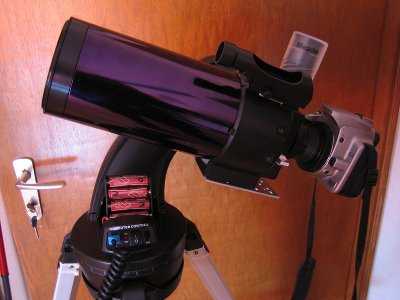
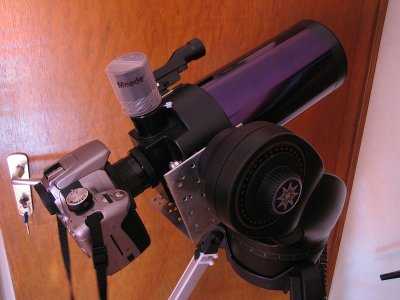
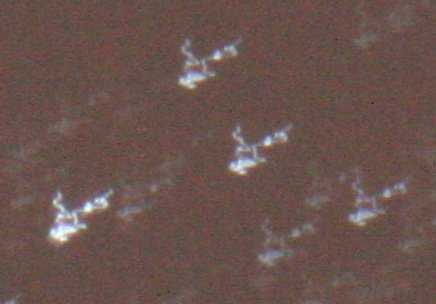
And:
thanks for your suggestions. But i don't think that vibrations are the reason for this kind of trouble. I want to show you another three images. You can see in ds_9minutes.jpg that the autostar drives almost draw a "fiddly" rentacle over 9 minutes. Approximately every minute there seems to be a small jerk in the system that leads to a slightly brighter spot in the picture. In comparison, in the jumpingaround_30seconds.jpg you can see "real" vibrations caused by me jumping around the tripod during exposure. Just like i suspected in my first e-mail, this leads to a kind of blur in the picture instead of the zigzag track caused by the autostar drives. In addition, the blur is not as big as in the ds_9minutes picture. The third picture shows a picture with the ETX in the old fork-mount, not perfectly aligned (this logically leads to the stars drawing a straight line). There is no zigzag- or rentacle track here... it has to be caused by the autostar (drives). The three images can be compared directly as they were taken in the same windless night inbetween half an hour at the same wind-protected location. The tripod was the same aluminium one for all three pictures and all pictures were taken focal with the same DSLR on ETX OTA. Again, thanks for your personal support and your great online collection! Posma Net
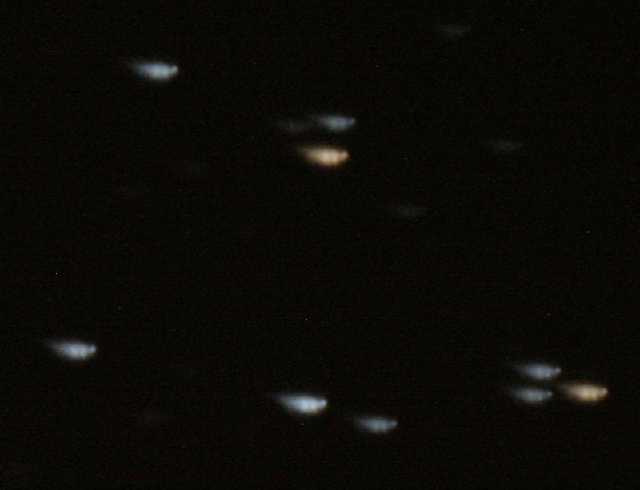
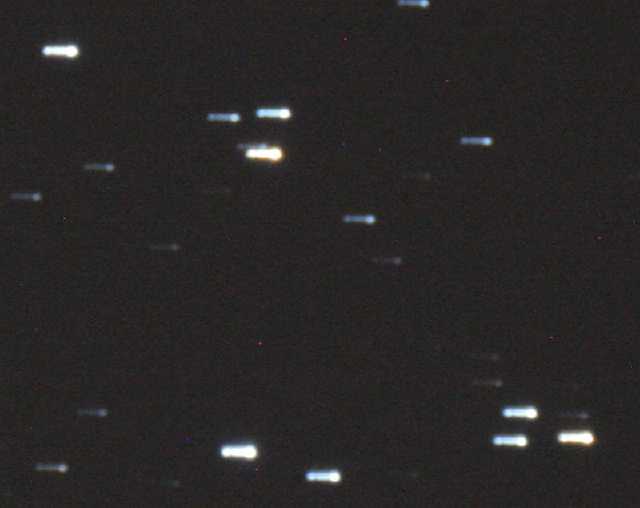
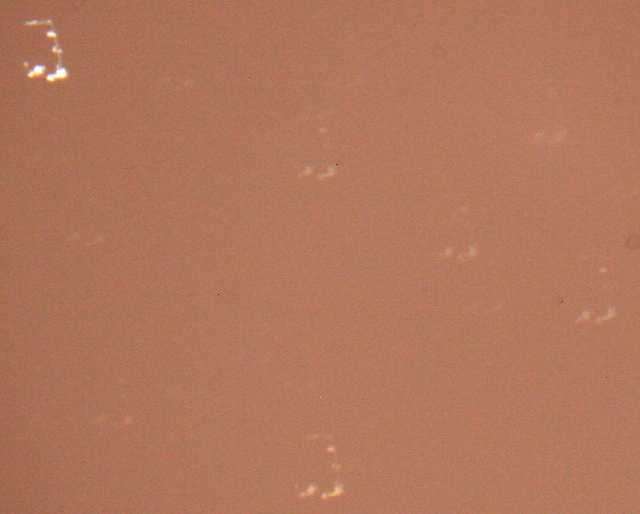
And:
This makes sense to me. There must be some kind of periodic error due to resolution limitations in movement. Too sad that it affects tracking that much. Thanks Mike! Yes i have tried that (putting DS on wedge) some time ago, with negative results: The DS mount has a construction-conditioned overwheight to its backside. (The dec axis can be balanced.) Thus the RA drive's clutch is slipping and proper tracking is not possible. Maybe some kind of counterweight on the mount's front can solve this problem, but there seems to be no easy way to attach one without drilling holes or something, besides loads of plastic parts in this aera. Clear skies! Posma NetMike here: There are several counterweight designs on the Helpful Information: Astrophotography page that don't require drilling holes. Howecer, keep in mind that small mounts like the DS and ETX are not designed for long duration astrophotography. Yes, you can do some types of astrophotography, such as piggyback and prime focus (for a few seconds or if lucky, a few minutes) but afocal and eyepiece projection will be the most challenging due to the high magnifications involved. Keep in mind that not only are you magnifying the object, you are also magnifying any tracking variations or vibrations in the mount.
Go to the January-March 2010 Astrophotography - Tips page.
Go to the April-December 2009 Astrophotography - Tips page.
Go to the January-March 2009 Astrophotography - Tips page.
Go to the May-December 2008 Astrophotography - Tips page.
Go to the February-April 2008 Astrophotography - Tips page.
Go to the July-December 2007 Astrophotography - Tips page.
Go to the January-June 2007 Astrophotography - Tips page.
Go to the October-December 2006 Astrophotography - Tips page.
Go to the July-September 2006 Astrophotography - Tips page.
Go to the April-June 2006 Astrophotography - Tips page.
Go to the January-March 2006 Astrophotography - Tips page.
Go to the November-December 2005 Astrophotography - Tips page.
Go to the September-October 2005 Astrophotography - Tips page.
Go to the July-August 2005 Astrophotography - Tips page.
Go to the May-June 2005 Astrophotography - Tips page.
Go to the March-April 2005 Astrophotography - Tips page.
Go to the January-February 2005 Astrophotography - Tips page.
Go to the October-December 2004 Astrophotography - Tips page.
Go to the July-September 2004 Astrophotography - Tips page.
Go to the April-June 2004 Astrophotography - Tips page.
Go to the January-March 2004 Astrophotography - Tips page.
Go to the 2003 Astrophotography - Tips page.
Go back to the Astrophotography Page.
Go back to my ETX Home Page.